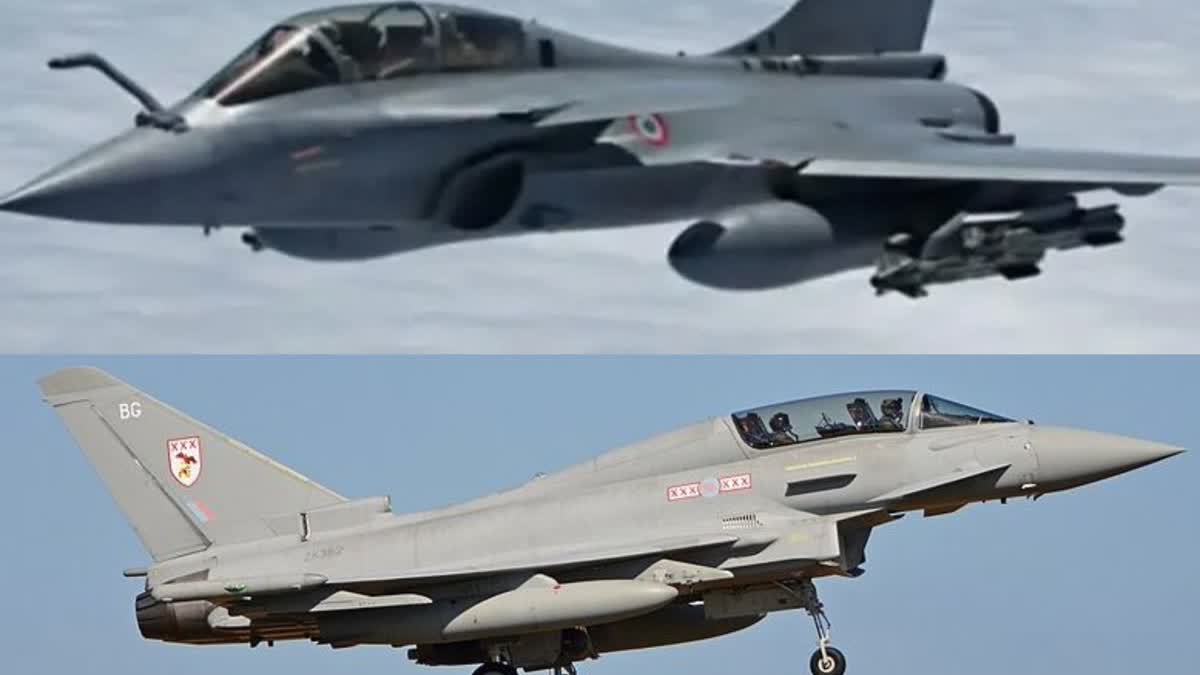New Delhi: Following German Chancellor Olaf Scholz’s visit to India last month, speculations are again rife about India’s bid to acquire 114 multi-role fighter aircraft (MRFA) to modernise the Indian Air Force’s (IAF) ageing fleet.
According to reports, Scholz is actively pushing the Eurofighter consortium representing Germany, the UK, Italy and Spain to sell the supersonic Eurofighter Typhoon fighter jet to India at a competitive price to undercut France’s offer of the Rafale.
India’s need for multi-role fighter aircraft stems from the evolving security landscape in the region, the need for modernisation of its air force fleet, and the desire to enhance indigenous defense capabilities. The acquisition of such aircraft is part of a broader strategy to maintain air superiority, deter adversaries, and ensure rapid response capabilities across diverse operational scenarios, from high-altitude mountainous terrains to coastal regions.
The IAF is currently phasing out several older aircraft models, which have been the backbone of India’s defence but are now obsolete and challenging to maintain. The IAF has around 30 squadrons of fighter aircraft and many of its aircraft, including the Jaguars, Mirage-2000s and MiG-29s, are set to retire in the next five to seven years. The MiG-21s are also set to be phased out in the next few months.
After the original medium multi-role combat aircraft (MMRCA) tender, which was scrapped in favour of a direct purchase of 36 French Dassault Rafale jets in fly-away condition at a cost of 7.87 billion euros in 2016, the IAF issued a new request for information (RFI) in 2018, widely referred to as MMRCA 2.0. This new RFI called for the acquisition of 114 multi-role fighter aircraft through the strategic partnership (SP) model, where a foreign company would collaborate with an Indian firm to manufacture the aircraft domestically.
The RFI specifies that the aircraft must be capable of performing multiple roles, including air superiority, ground-attack, reconnaissance, and electronic warfare. The aircraft should be capable of operating from both standard runways and high-altitude airstrips, which are crucial given India’s diverse geography.
A total of eight aircraft responded to the RFI. These include the Dassault Rafale, Eurofighter Typhoon, Boeing F/A-18E/F Super Hornet, Boeing F-15EX Eagle II, Lockheed Martin F-21 (a variant of F-16V with 14 India-specific customizations), the Saab JAS-39 Gripen E/F, Mikoyan MiG-35, and Sukhoi Su-35.
According to a report in the Bulgarian Military defence news website, German Chancellor Scholz has taken a personal interest in pushing the Eurofighter Typhoon deal with India. The report stated that the UK-based BAE Systems, Italy’s Leonardo, and Airbus are prepared to offer a “significantly lower price” for the Eurofighter Typhoon than Dassault’s Rafale. The Eurofighter Typhoon, in fact, was one of the finalists in the earlier MMRCA contest which was eventually won by Rafale.
“Competitive pricing could play a pivotal role in the MRFA programme, where India’s considerations extend beyond aircraft performance,” the Bulgarian Military website report states. “With cost efficiency factoring heavily into the decision-making process, the Typhoon’s revised pricing approach might give it an advantage in the battle for MRFA. Germany’s proactive involvement reflects the country’s determination to drive more export contracts for the Eurofighter, especially in crucial markets like India.”
So, how do the Eurofighter Typhoon and the Rafale compare against each other?
